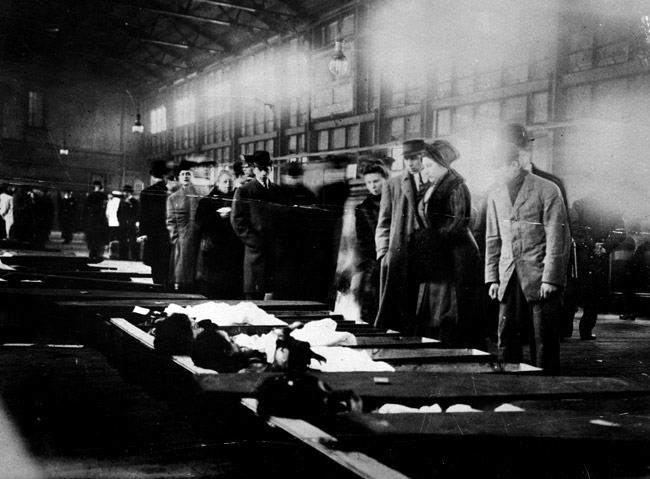
The shock of the fire, the largest industrial accident in United States history, a great tragedy, reverberated through the garment industry and around New York City. The front page of the New York Times on Sunday morning of March 26th, 1911 read, “141 Men and Girls Die in Waist Factory Fire; Trapped High Up in Washington Place Building; Street Strewn with Bodies; Piles of Dead Inside,” and detailed the events that took place citing that “141 young men and women at least 125 of them mere girls were burned to death or killed by jumping to the pavement below.”1 Each of the victims had hopes and dreams for their futures, many had newly arrived in the United States and were starting a new life and working to support their families.

The shock and pain of this great tragedy and loss of lives weighed heavy on the immigrants living in the Lower East Side. News of the fire had spread quickly as families searched desperately for their loved ones. Rose Cohan, who had survived the fire, went home and cried herself to sleep on her bed, to be woken by her cousin Harry, who “was shouting and crying. He had made the rounds, looking for Rose and had been unable to find her. He feared the worst had happened.”2 Desperate for news, family members of other workers, went to police stations and the morgue. In an article written in the popular Yiddish newspaper, the Forward, on March 27th, 1911, the reporter describes the scene at the morgue where victims were “identified by a friend, a father or a mother; men and women leave the morgue with grief-stricken faces, empty-handed.”3 The Lower East side was overcome with suffering and anguish. The morning after the fire, the headline of the Forward read, “The Morgue Is Full of Our Victims!,” and the article beneath told of the pain felt through the Lower East Side,
Yesterday was one of the most terrifying days in the history of the Jewish neighborhood. Our entire immigrant population is going about disoriented and shuddering in pain. Daughter, sisters, cousins and friends are being mourned in hundreds of homes….Each one of us is a mourner whether or not we knew one of the victims.4
So many people from the Lower East Side worked in the garment industry and knew the realities and conditions of the factories and deeply felt the pain of this tragedy.
1. “141 Men And Girls Die In Waist Factory Fire; Trapped High Up In Washington Place Building; Street Strewn With Bodies; Piles Of Dead Inside,” The New York Times. March 26, 1911. https://timesmachine.nytimes.com/timesmachine/1911/03/26/104859694.html?pageNumber=1.
2. Leon Stein,“Nightmare of Survival,” Trianglefire.Ilr.Cornell.Edu, 2018. https://trianglefire.ilr.cornell.edu/primary/testimonials/ootss_LeonStein.html.
3. “What a Reporter from the Forverts Saw at the Morgue,” Forverts, March 27, 1911. https://forward.com/articles/136173/what-a-reporter-from-the-forverts-saw-at-the-morgu/.
4. “The Morgue Is Full of Our Victims!,” Forverts, March 26, 1911. https://forward.com/news/national/136207/the-morgue-is-full-of-our-victims/.